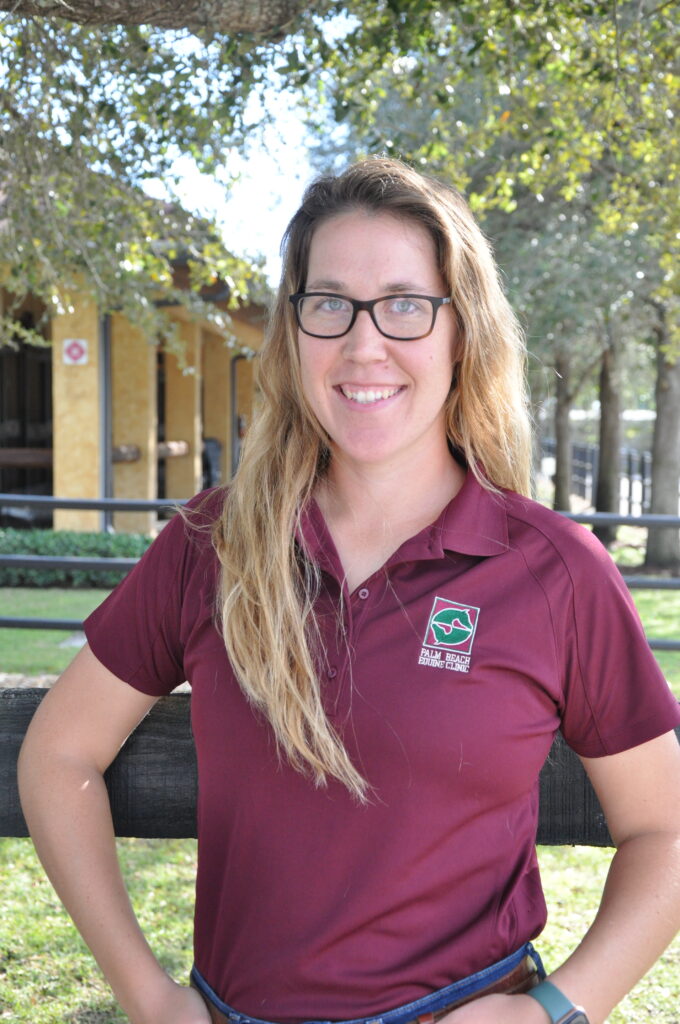Category: Team
A few of Palm Beach Equine Clinic’s veterinarians traveled to the “Big Apple” and traded in palm tree views for the city’s skyline at the 2022 Longines Global Champions Tour New York (LGCT). Palm Beach Equine Clinic served as the competition’s Official Veterinarian, and Dr. Richard Wheeler, Dr. Bryan Dubynsky, and Dr. Christopher Elliott were on-site supporting the horses and riders at the competition. We spoke with Dr. Chris Elliott about his experience at the penultimate event of the LGCT.
1. This is Palm Beach Equine’s second time being the Official Treating Vet at a Longines Global Champions Tour show. How are these shows different from other equestrian competitions?
The Longines Global Champions Tour (LGCT) is really unique because they’ve been able to take equestrian competitions to iconic locations all over the world. They’ve figured out how to set up a temporary set of stables and arenas anywhere, and that’s one of the main things that sets LGCT apart from other equestrian competitions.
2. What do your tasks and responsibilities include?
We’re here not only as the Official U.S. Department of Agriculture-accredited Veterinarian but also as the Official Treating Veterinarian, so our responsibilities start at the beginning of quarantine. We work with the U.S. Department of Agriculture and their team of veterinarians to ensure that all the appropriate importation of the European horses is correct by their quarantine standards, and we ensure that those quarantine standards are maintained throughout the competition. As the Official Treating Veterinarian, we see any horse that requires veterinary attention in and out of the ring. We also work alongside the Official Shipping Agent to get all the horses’ health certificates and ensure they’re fit to travel and can go home or wherever their next destination may be.

3. What’s a typical day at the show like?
Our days start really early here! The first horse warm up is at 6 a.m., so we wake up before the sun rises to take the ferry from Manhattan to the show grounds on Governors Island. One of us is primarily in the stables to look after the horses and provide support to the riders and grooms, while the other is next to the ring to act swiftly if any accident occurs. Our day goes until it’s all done, so they’re long days, but we enjoy what we do. The final days here are a bit longer because the ferry is also the transport system for getting all of the horses off the island, and it can’t take a large number of horse trucks.
5. What did you enjoy most about your time at LGCT New York?
The competition is fantastic, the quality of horses is amazing, and the location is absolutely stunning! Being at an equestrian competition against the backdrop of the Manhattan skyline and the Statue of Liberty is unique, and something very few veterinarians experience. For me, another big highlight was seeing the President of the United States fly in and out of the city on Marine One. It was pretty cool to see that in person.
Vinceremos Therapeutic Riding Center hosted area first responders at its facility in Loxahatchee, FL, on December 6, 2021. The annual event provides training by veterinarians from PBEC for first responders in handling horses during an emergency. The Winter Equestrian Festival season sees the influx of thousands of horses each winter. These sessions have successfully educated area first responders in equine care during a crisis to create a safer community for the horses.


Dr. Janet Greenfield-Davis giving the demonstration to the area first responders. Photos courtesy of Vinceremos Therapeutic Riding Center.
What does a typical day look like for you at Palm Beach Equine Clinic?
My work is mainly sports medicine oriented. I do a lot of performance evaluations to make sure riders get the most out of their equine athletes every time they enter the ring. Also, pre-purchase exams are a large part of what I do, but every day is different. You never know what is going to come up on a daily basis. It’s what makes the job so great. There’s always something to learn from both the horses and their riders.
What aspects of equine medicine interest you most, and what types of cases do you find most rewarding?
What I really love is diagnosing and treating performance
problems. Sometimes very subtle problems can lead to more rails and lower results. The process of putting together all the pieces of the puzzle by really listening to the rider, taking a careful history, examining the horse, and then treating the horse, is so rewarding. Knowing you are part of the team that makes the horse and rider successful is very special.
Currently, I’ve been spending a lot of time diagnosing and treating neck and poll issues. The more we look in these areas, the more we are finding performance-related issues such as head tossing, head tilt, one-sided rein resistance, rooting, and lots of other symptoms we haven’t necessarily thought about in the past as being related to poll and neck discomfort.

Dr. Bryan Dubynsky
Photo courtesy of Jump Media
What do you enjoy most about working with performance horses?
The most enjoyable part would be when you see horses that you have treated and made better do well in competition. There’s nothing more satisfying than being part of the team and having a rider say, “He’s/she’s never felt so good!”
What has been one of your favorite moments while working for Palm Beach Equine Clinic?
There have been so many great moments at PBEC. It is so special when the entire team, from ambulatory vets, to surgeons, and everyone in between pulls together and turns challenging cases into successful outcomes. One particular case was when a horse had a full thickness abdominal laceration from a jump cup and his intestines were falling out. The attending horse show vet did perfect emergency first aid, the horse came to the clinic, and the whole team medicated and prepped for surgery. The surgeon patched him all up and the horse was competing again a few weeks later. That case really illustrated what a whole team effort looks like in achieving great outcomes.
When and why did you decide that you wanted to become a veterinarian?
My father is a physician, and I always had an interest in medicine. Choosing to become a veterinarian seemed to be a natural fit combining my love for horses and medicine.

Dr. Dubynsky performing a hind flexion test.
Photo courtesy of PBEC
What is some advice that you would give someone who wants to become a veterinarian?
Pick out the top people in the industry and work with them. Learn as much as you possibly can from the people who have been practicing for a long time.
What is something interesting that people may not know about you?|
I love to do woodworking projects like building tables.
Dr. Santiago Demierre mainly focuses on equine performance medicine and specializes in the prevention and treatment of lameness in sport horses. Originally from Argentina, Dr. Demierre completed a certification program called the Educational Commission for Foreign Veterinary Graduates (ECFVG) through the American Veterinary Medicine Association to validate his degree in the United States. Dr. Demierre completed an internship at PBEC and went on to become a staff veterinarian.
What is your background with horses?
When I was little my father used to have racehorses and train them. I would spend hours with him and the horses at the farm. Later on, I had friends who worked with cows, and I also played a little polo.
Where are you originally from, and where did you complete your undergraduate degree?
I am from San Antonio de Areco, which is a small town in Argentina. I went to vet school at Universidad de Buenos Aires.
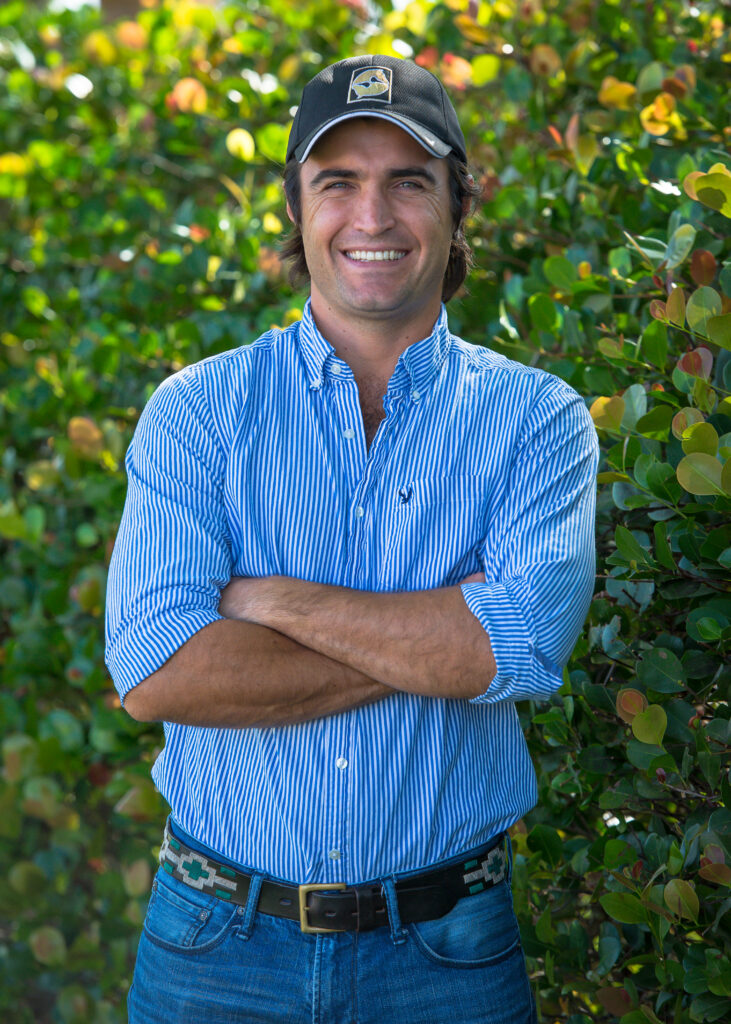
Dr. Santiago Demierre
Photo courtesy of PBEC
What inspired you to become an equine veterinarian?
I am not sure what exactly inspired me. I was always very interested in animals in general, not only horses. I have had the idea of becoming a veterinarian since I was five or six years old. I wanted to be able to spend as much time with animals as I could. I never thought of any alternative careers.
What advice would you give someone who wants to become an equine veterinarian?
I would tell them it is a great career, but to be aware that there is a lot of work and continuous studying ahead.
What does a typical day look like for you at PBEC?
I drive from barn to barn all day and look at lameness and performance horse cases mostly.

Dr. Santiago Demierre taking an x-ray.
Photo by Erin Gilmore Photography
What do you enjoy most about working at PBEC?
The team at PBEC is made up of great veterinarians and great friends. There is always somebody from whom you can learn something new every day. Also, it is awesome to be in contact with the world’s top equine athletes. That is what I enjoy most about being part of the team at PBEC—working on performance horse cases. More specifically, I really like preventing and treating lameness in sport horses.
When not at PBEC, what do you enjoy doing or where can we find you?
I love outdoor activities like fishing, hunting, and running as a workout. I also love cooking and red wine.
Where are you originally from, and where did you complete your undergraduate degree?
I am originally from Prince Edward Island, Canada. I completed my undergraduate degree and veterinary school there. I then did my surgery residency at Auburn University in Auburn, AL.
What does a typical day look like for you at Palm Beach Equine Clinic?
Most of my time at Palm Beach Equine Clinic is spent splitting the surgery on-call with Dr. Weston Davis and Dr. Robert Brusie. When I am there, you are most likely to see me doing colic surgery. Outside of those responsibilities, I work for Shane Sweetnam at Sweet Oak Farm as a staff veterinarian. I oversee all aspects of those horses’ routines and preventative care spending time at their farm and at the Winter Equestrian Festival (WEF). I also enjoy the challenge of performance evaluations.
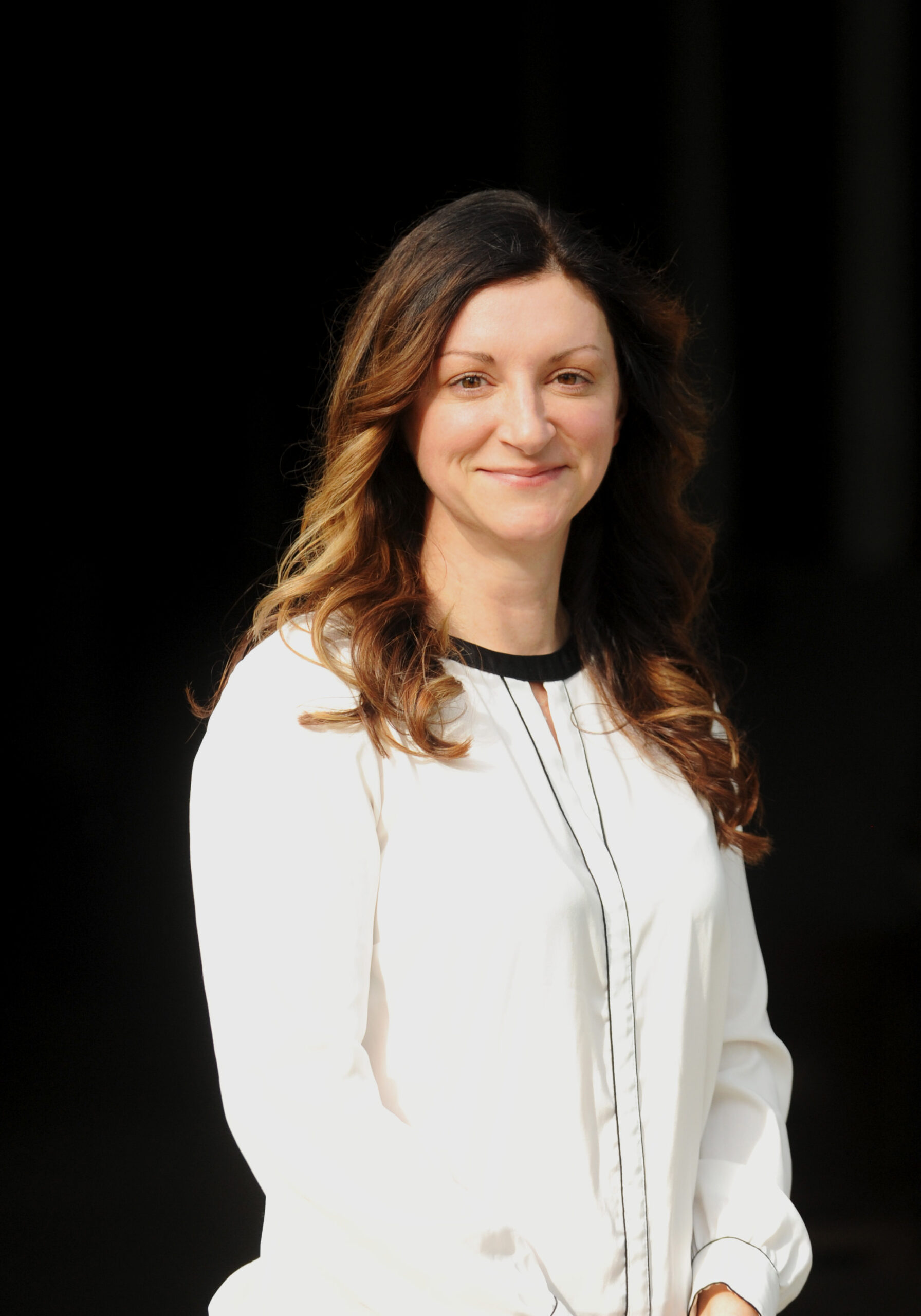
Photo courtesy of Liz Barrett
What aspects of equine medicine interest you most, and what types of cases do you find most rewarding?
I really enjoy performance horse issues. The cases that interest me the most are those dealing with horses that are competing at the top level of their sport. I like helping maintain the horses so they are able to compete at that high level comfortably. On the flip side, it’s also extremely rewarding to be able to take a colicky horse that is in pain and fix them by performing the surgery they needed to survive.
What is one of the most interesting cases you have worked on?
I recently had a case where the patient was brought in for evaluation of a wound on their side, and that led to discovering a retained testicle. I also get excited when I work with any horses that I have been fangirling over in the show ring.
What is one of your favorite things about working at Palm Beach Equine Clinic?
My favorite thing about PBEC is the camaraderie and team atmosphere. I like that there are plenty of specialists to consult with, and everyone really works together well. We have a great group of intern veterinarians who make working up cases enjoyable and after-hours emergencies run smoothly.

Photo by Bridget Ness Photography
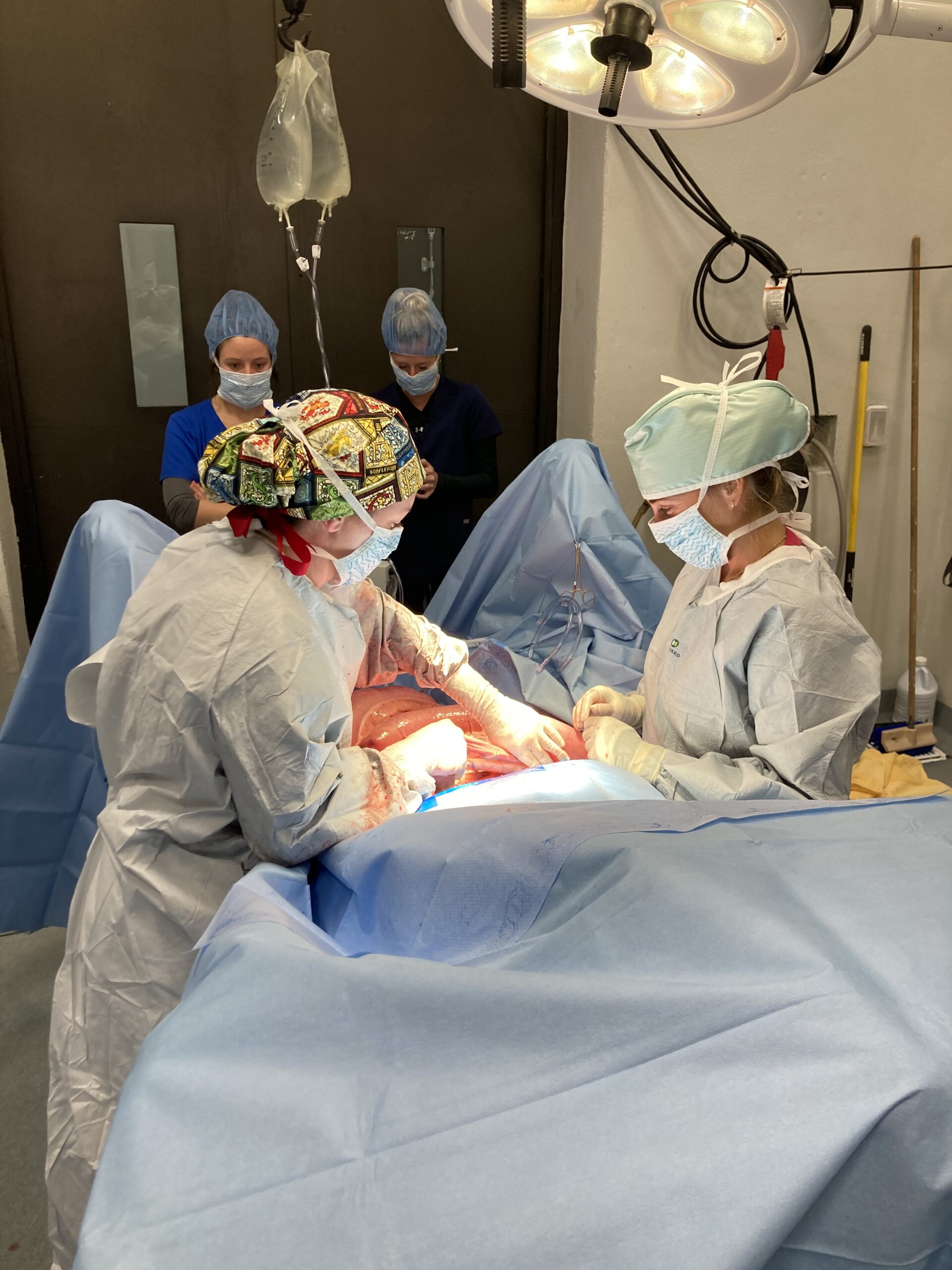
Photo courtesy of Liz Barrett.
What advice would you give someone who wants to become an equine veterinarian?
Only do it if you can’t imagine yourself doing anything else.
What is something interesting that people may not know about you?
I am a decent juggler, I hate bananas, and I have my own 13-year-old gelding that I compete in the adult jumper division when I am feeling brave enough to venture into the show ring.
Meet the PBEC Team: Dr. Caitlin Hosea
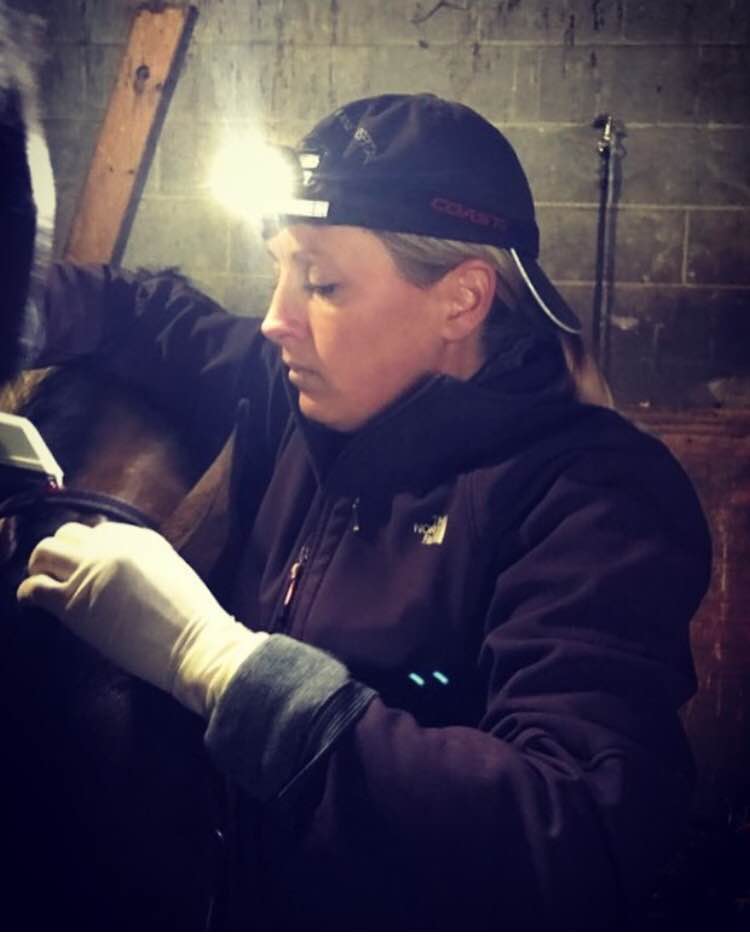
Get to know our team of equine veterinarians
Read more about Dr. Caitlin Hosea by clicking here.
Where are you from originally, and where did you complete your undergraduate degree?
Dr. Hosea: I was born and raised in Santa Barbara, California. I received my bachelor’s in animal science at the University of Kentucky with an emphasis on equine studies.
What is your background with horses?
Dr. Hosea: I started riding at a very young age. Through junior high and high school, I was a working student at a hunter/jumper barn. I groomed and taught summer camps to pay for my lessons and shows. During undergrad, I worked as a groom and rider for a few different barns in Lexington and continued to show my horse. I have a new horse now – one of my favorites from the racetrack that was given to me. He’s shown some talent over fences. Hopefully you’ll see us in the jumper ring soon!
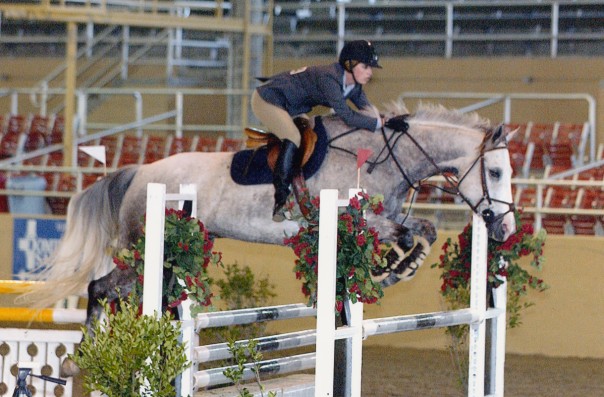
What inspired you to become an equine veterinarian?
Dr. Hosea: My interest in veterinary medicine developed after moving to Kentucky. My goal had always been to ride professionally. That all changed when I got a job as a veterinary technician. I spent four years working at a large equine hospital. I also had a second job as a technician for a racetrack veterinarian. During that time, I gained a wealth of knowledge and exposure to a wide variety of interesting cases and eventually decided that I wanted to go to vet school.
What do you enjoy most about working at Palm Beach Equine Clinic?

Dr. Hosea: I love the variety of cases we treat in the hospital and the opportunities to learn from our large team of talented veterinarians. I always enjoy spending time at WEF as well. I feel very lucky to be able to watch some of the best riders and horses in the world compete at one of the best venues in the country. As a junior, I idolized riders such as Beezie Madden, Margie Engle, and Eric Lamaze to name a few. While onsite at WEF, I am able to watch those riders (as well as a long list of other talented equestrians) compete at the highest levels in person. It’s like having floor seats at a Lakers game.
What aspects of equine medicine interest you most, and what types of cases do you find most rewarding?
Dr. Hosea: Sport horse lameness, podiatry, equine neonatal medicine, and diagnostic imaging, especially ultrasound. Complicated lameness cases are what I really enjoy. After my internship at PBEC, I spent five years working at Keeneland as a racetrack veterinarian. During that time, I was fortunate enough to work with some remarkable horsemen and truly amazing horses. For me, being part of a team that works together to advance a horse’s athletic career is incredibly rewarding.

What experience do you have with equine podiatry?
Dr. Hosea: I’ve always had a strong interest in podiatry. Between my second and third year of veterinary school, I spent eight weeks completing a farrier certification program at Oklahoma State Horse Shoeing School in Ardmore, Oklahoma. During this time, I was shoeing horses every day as well as building hand-made horseshoes in a fire from plain bar stock. By the time I finished, I could shoe a horse all the way around; build, shape, and fit steel shoes; draw clips; and weld bar shoes.
Palm Beach Equine Clinic Provides Veterinary Students Opportunities to Further Education and Career

The path of veterinary medicine involves many years of devotion to education, both at the undergraduate and graduate level, prior to putting that knowledge into practice. Only a handful of those students choose to pursue equine medicine, and an even smaller subset then take on the challenge of becoming a board-certified specialist in their chosen field.
Since its inception 40 years ago, Palm Beach Equine Clinic (PBEC) has been committed to supporting the next generation of equine veterinarians and has provided numerous students, at various stages in their education, with learning opportunities and mentorship. Through externship, internship, and residency programs, PBEC has helped prepare students and veterinary graduates to lay the groundwork for successful future careers.
Equine Medicine in the Equestrian Capital
One of the key benefits of the programs is that PBEC is based in Wellington, Florida, an area that has rightfully earned its title of “Winter Equestrian Capital of the World.” The region is home to show jumping, dressage, polo, racing, and western performance horses; allowing ample opportunities for veterinarians to become well-rounded sports medicine practitioners.
“We are one of the foremost equine medical centers in North America and based in the epicenter of the equine industry,” said Dr. Scott Swerdlin, the president of PBEC who also spearheads the clinic’s Internship Committee. “The opportunities we are able to offer students looking to pursue a career in sports medicine are unmatched. In this regard, we are fortunate to attract top talent from some of the most prestigious universities around the world. Our interns get to be part of all the action and learn in an environment where every aspect of the horse’s health is examined with a fine-tooth comb.”
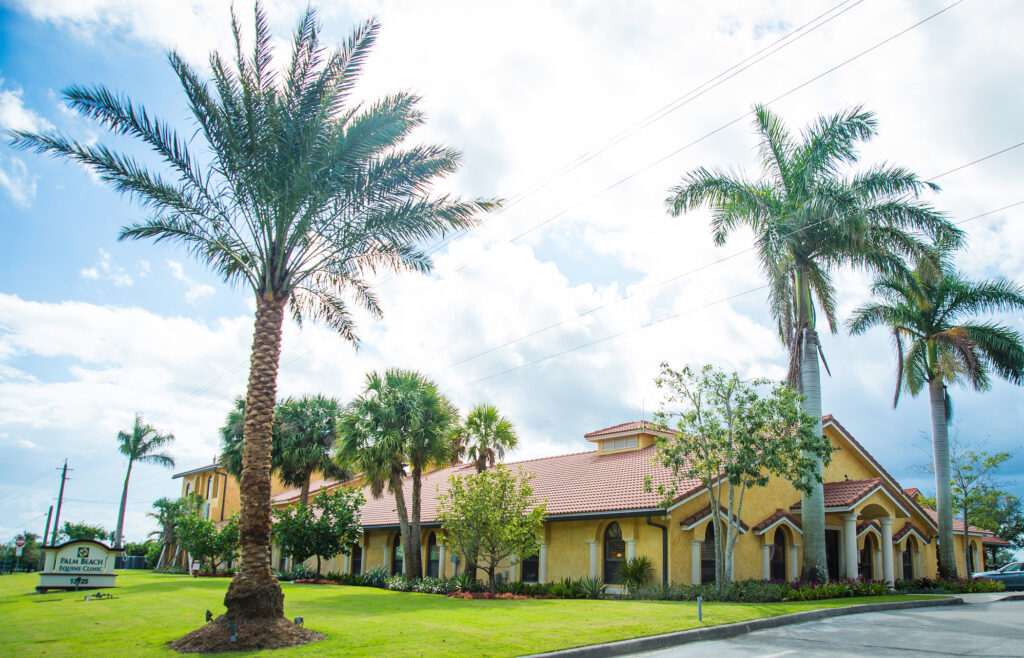
A Melting Pot of Expertise
PBEC’s team encompasses over 35 veterinarians who hail from across the U.S. and abroad to Canada, Colombia, Argentina, Australia, the U.K., and beyond. Their areas of expertise are wide-ranging, from lameness to acupuncture and breeding to dentistry, including board-certified specialists in surgery, diagnostic imaging, and internal medicine.
Dr. Sidney Chanutin grew up immersed in the horse world and spent time shadowing nearly every veterinarian at PBEC while she was in high school. After earning her doctorate in veterinary medicine from the University of Florida, she returned to officially join the PBEC team as an intern.

“What I most enjoyed about my internship was learning from a diverse group of veterinarians,” said Dr. Chanutin, “along with their different backgrounds, styles of working, and varied approaches to problem-solving. Everyone is willing to help and offer their unique perspective, so it’s a truly cohesive team.”
The first introduction to PBEC for many students is an externship. Qualified veterinary students in their final years of school can spend a few weeks with the PBEC team shadowing emergency cases in the hospital, on ambulatory calls, and at sports medicine appointments at the industry’s top competition venues. Externships also act as an introduction to the practice for many students seeking an internship upon graduation. This allows both the aspiring veterinarian and the PBEC team to become familiar with each other and see if it may potentially be a good match for a 12-month internship position.
Dr. Santiago Demierre is originally from Argentina and completed his degree in veterinary medicine from the Universidad de Buenos Aires in 2012. He validated his veterinary degree in the United States in 2017 through a certification program with the American Veterinary Medical Association. Dr. Demierre was an integral part of PBEC initially as an intern before becoming an official staff veterinarian.
“The high caseload and long-term partnerships working and learning alongside great veterinarians helped me not only in improving my professional skills and knowledge but also with other aspects such as communication with clients and colleagues,” Dr. Demierre reflected.

Unlike in human medicine, internships are optional for veterinarians. Once a veterinarian passes the necessary state board exams, they can start treating animals on day one out of school. Choosing to work under the supervision and mentorship of experienced veterinarians allows interns to apply their years of learning in the classroom into clinical practice. At PBEC, interns can learn with the aid of advanced technologies in diagnostic imaging, innovative regenerative therapies, reproduction and fertility software, and specialized surgical suites.
“While we can teach and provide them with a wealth of knowledge and hands-on experience,” Dr. Swerdlin explained, “our interns in return are extremely valuable to us because they bring a fresh mindset and new ideas to the team,” explained Dr. Swerdlin. “The ability to work well with others, a good sense of humor, great work ethic, and most importantly, excellent communication skills are the qualities I look for in an intern.”
Never Stop Learning
Continuing education is a major component of a life in medicine. In addition to journal clubs, educational seminars, and opportunities to travel to professional conferences, students are always exposed to learning opportunities by working collaboratively with colleagues as well as visiting and referring veterinarians.
After completing their internship, most will pursue an associate veterinarian position, whether at PBEC, another private practice, a university, or work independently. Some will go a step further and advance their education through a residency program. Residencies are rigorous two to four year commitments—length dependent on the specialty—designed to give veterinarians the skillset, knowledge base, and experience required to become eligible for certification by veterinary medical specialty boards. Board-certified specialists are considered experts in their field and often treat complicated, difficult cases.
With board-certified specialists on staff, PBEC has provided residencies to select veterinarians over the years, including Dr. Michael Myhre. A graduate of Cornell University College of Veterinary Medicine, Dr. Myhre fulfilled his surgical residency under the direction of PBEC’s board-certified surgeons Dr. Robert Brusie, Dr. Weston Davis, and Dr. Jorge Gomez. He assisted on over 568 surgeries over his three years at PBEC.
“Completing my residency at PBEC has allowed me to pursue my dream of becoming an equine surgeon and working at a large referral center in the northeast. I learned a great deal about all aspects of general surgery, but especially orthopedic surgery. We did many fracture repairs at PBEC, and I would love to continue focusing on these in the future. Without my time at PBEC, I wouldn’t be able to practice as I am now,” Dr. Myhre said.

Externs, interns, and residents are integral members of the equine hospital. It is part of PBEC’s mission to support the community, which includes the next generation of equine veterinarians.
Dr. Swerdlin said, “Teaching and mentoring young veterinarians and watching them grow into confident and competent practitioners gives me the greatest satisfaction.” To learn more about externships, internships, and other opportunities with Palm Beach Equine Clinic, please visit equineclinic.com/internships-externships or call 561-793-1599.
Dr. Jorge Gomez and Dr. Christopher Elliott were amongst the over 100 veterinarians on the ground supporting the equine athletes at the 2020 Tokyo Olympic Games. Jorge Gomez, MVZ, MS, DACVS, served as the Official Veterinarian for the Mexican Show Jumping Team and is a surgeon with Palm Beach Equine Clinic, and Chris Elliott, BVSC, MRCVS, MANZCVS, DACVSMR, served as Veterinary Services Supervisor and is an associate veterinarian for Palm Beach Equine Clinic. We spoke with each of them about their experiences at this unprecedented international event.
What were your expectations for Tokyo, and did the Games live up to those expectations?
CE: Tokyo 2020 reached far beyond my expectations. The ability to achieve such an elite level of equestrian competition in the face of COVID-19 restrictions is remarkable. The whole Olympic organizing committee should be proud of this achievement.
JG: We all knew of the existing restrictions in place for COVID-19. There were mobility limitations in place to decrease the chances of spreading the virus, however, the Games were very well organized. The competition and training arenas were state-of-the-art facilities, and the stables were all under air conditioning, so those amenities couldn’t have been better.
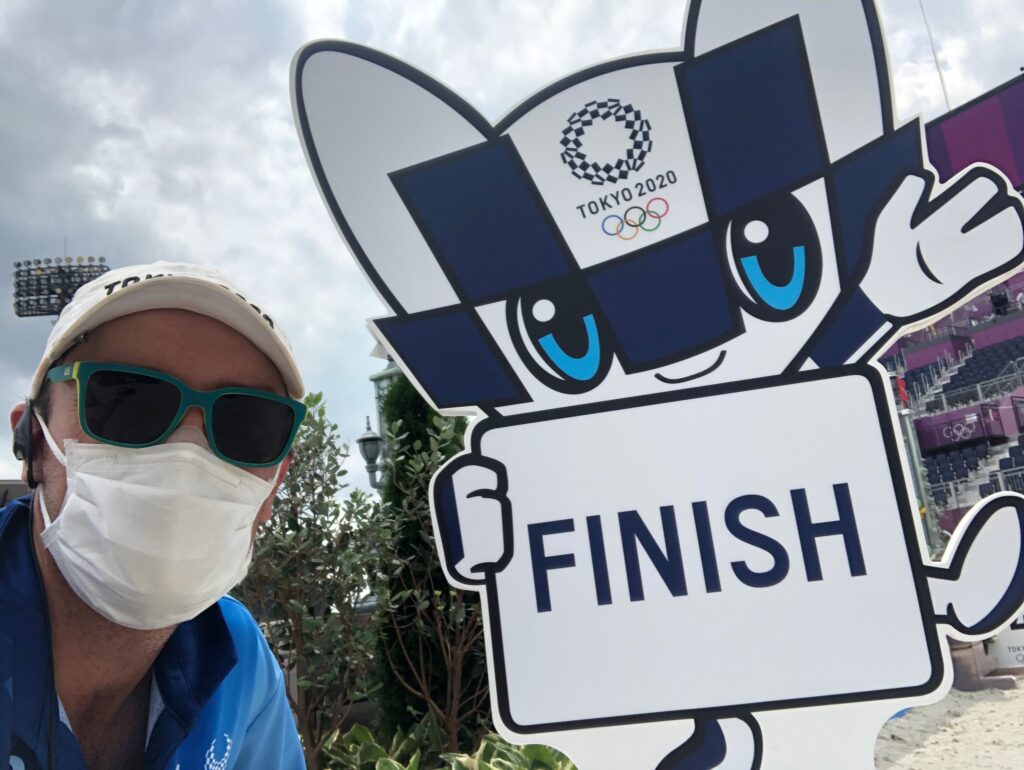

Dr. Chris Elliott concludes the 2020 Olympic Games with Miraitowa (the Olympic mascot).
What did you enjoy most about your time at the Olympics?
CE: Having a front row seat to the Olympic Games has been an honor and a privilege. I have most enjoyed working alongside my veterinary colleagues from across the globe. The Games spirit was strong among all the vets at Tokyo 2020.
JG: Most definitely the level of competition. We had the opportunity to watch the best athletes in all three disciplines dressage, eventing and show jumping.
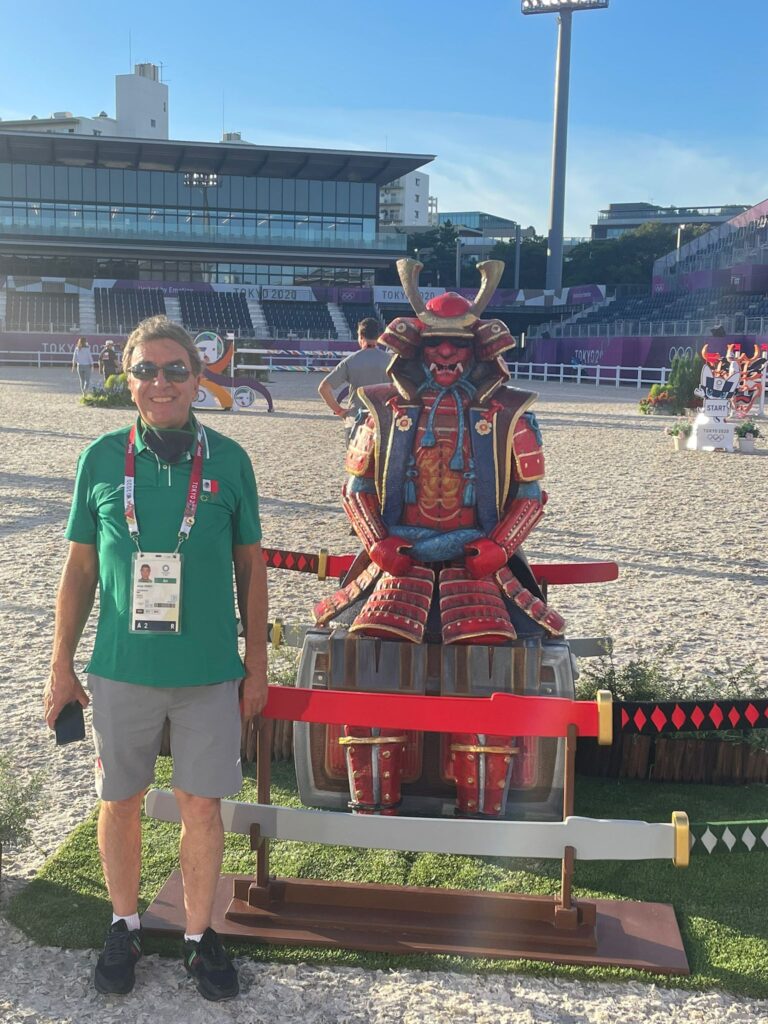
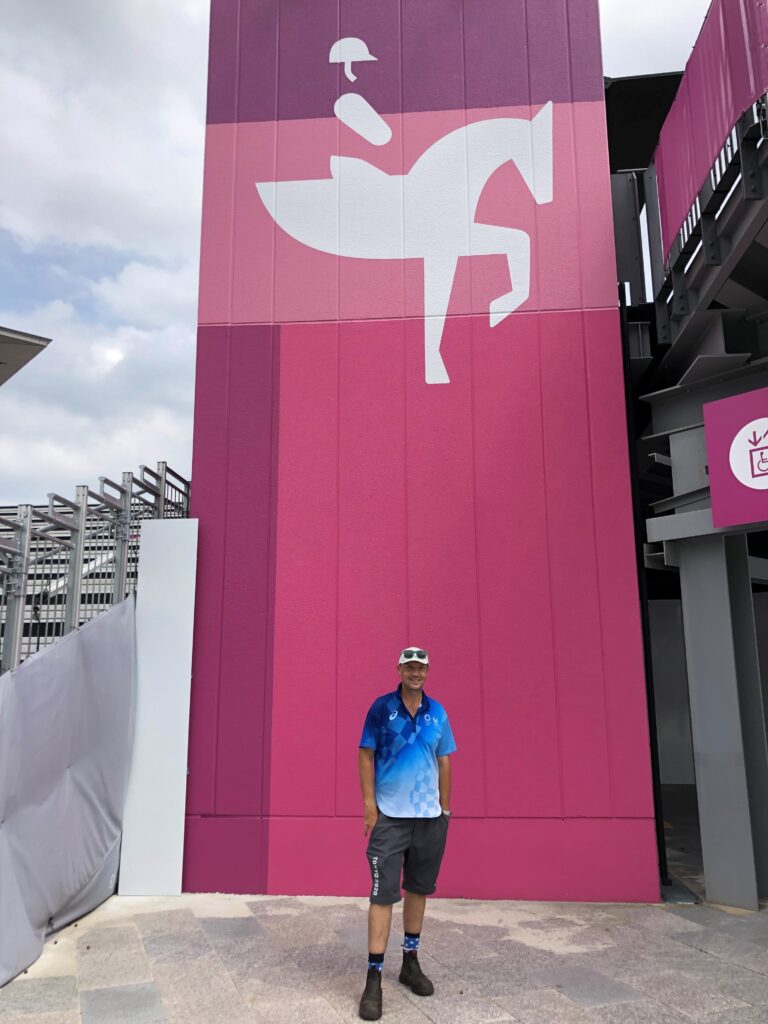
What was the experience like of working with such a diverse group of veterinarians?
CE: It’s always great working alongside veterinarians from all over the world. Veterinary medicine transcends language and cultural barriers and bonds us all in the goal of preserving equine health and welfare. In the face of many extreme challenges surrounding these Olympic Games, the professionalism, dedication, and efficiency of all vets at the event rose to the fore to ensure the very best in equine health, welfare, and performance.
JG: The experience is always nice and an honor to be a part of. There’s a group of us that have been at many of the international competitions and Olympic Games for years. Then, there are also new faces, and this is a wonderful opportunity for us all to meet. We share difficult cases from our practices as well as talk about new techniques and treatments.


Palm Beach Equine Clinic extends congratulations to all of the athletes that represented their respective countries at the 2020 Tokyo Olympic and Paralympic Games. While challenges were abundant, the events were awe-inspiring and the best of equestrian sport was on display.
PBEC also extends a special congratulations to our friends Dr. Mike Heitmann and Alice Womble, the owners of Sanceo, ridden by Sabine Schut-Kery. Sanceo was a part of the U.S. dressage team that won silver and had two personal best scores at the Tokyo Olympic Games.
Meet MRI Manager Cami Glaff
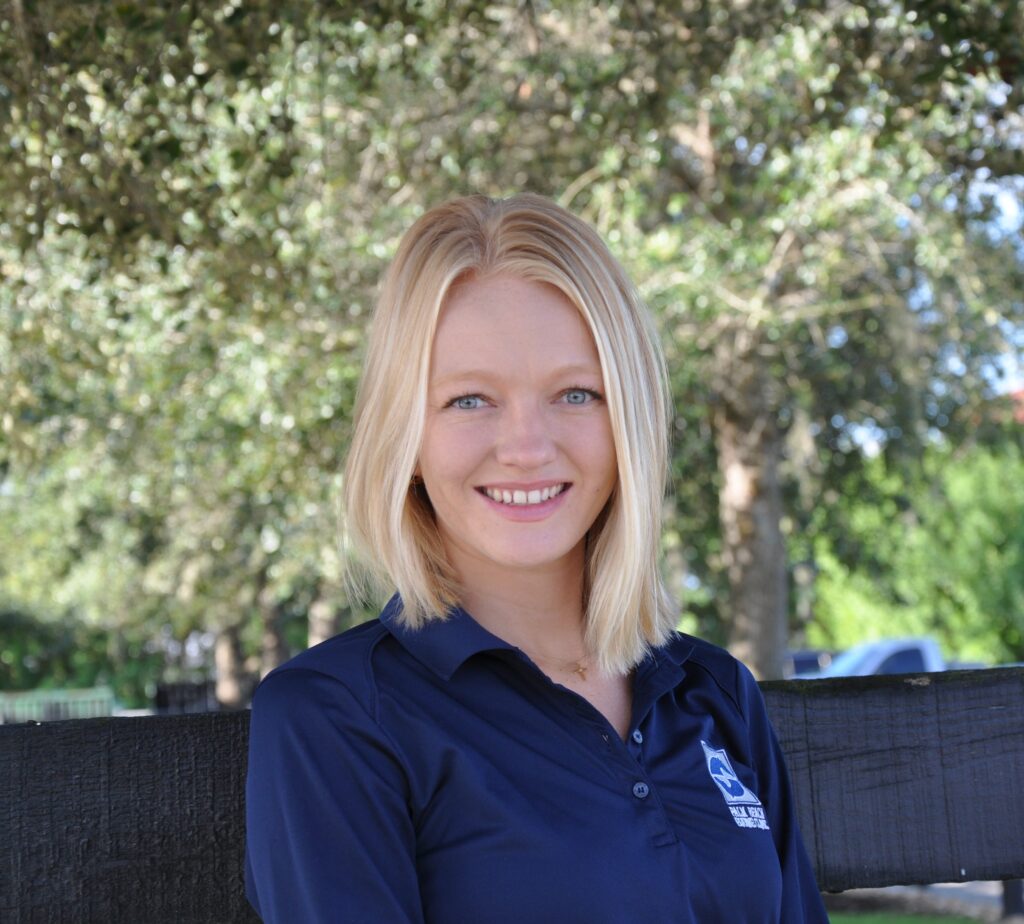
Magnetic Resonance Imaging Manager Cami Glaff
Modern veterinary diagnostic technologies allow doctors to capture highly detailed images which can make a difference in having the most accurate diagnosis and determining the best course of treatment. Capturing these images, however, is another feat in itself. Imaging Technicians work to create a clear and comprehensive diagnostic profile by operating advanced technologies while keeping the patient still, calm, and comfortable. Spearheading management of all Palm Beach Equine Clinic patients for Magnetic Resonance Imaging (MRI) is Camille “Cami” Glaff. A Jupiter, Florida, native, Cami has been an essential team member of PBEC since March of 2016.
Get to know PBEC MRI Manager Cami Glaff

What is your background with horses?
I have been riding horses since the time I learned how to walk. I grew up trail riding and began competing on the hunter/jumper circuits when I was around 10 years old. I pursued a career with horses by studying Business Management with a specialization in Equine Science at St. Andrews University in North Carolina. I represented my school in the saddle by competing on their Intercollegiate Horse Show Association (IHSA) team throughout my four years there. I spent my first year after graduation as a groom and rider traveling to shows on the circuit. However, I discovered that I was more interested in the medical aspect of the horse industry, and I have been with PBEC ever since.
Have you always worked in the Imaging Department?
I joined Palm Beach Equine Clinic as the MRI Technician and quickly advanced to be the Manager of this department. I have also cross trained in other aspects of our imaging modalities so that I am able to properly operate our Nuclear Scintigraphy and Computed Tomography (CT) technologies as well. When I am not with an MRI or Imaging patient, I try to lend a hand by helping in other departments as needed.
What does a typical day as the MRI Manager entail?
When a horse is dropped off at the Clinic for an MRI, I perform a brief exam to note their vitals, place an intravenous catheter, and pull their shoes off. Once we are ready to begin the MRI, it is my responsibility to make sure we acquire the best images possible for our radiologist, Dr. Sarah Puchalski, to examine. The MRI is extremely sensitive to motion, and because of that I have to ensure that the patient is properly sedated, calm and comfortable so that we can obtain sharp images.
Once the horse is settled into position for whichever site is being scanned, I make slight adjustments to the unit’s magnet to make sure it is in the precise location needed. Depending on the site being scanned, such as the fetlock or suspensory origin, and the patient’s compliance, it may take anywhere from one to two hours to completely image the area. Once the scans are completed and are up to our standards, they are sent directly to our radiologist, Dr. Sarah Puchalski, who generates a complete MRI Report for the client typically within 24 to 48 hours. The hospital staff and I monitor the patient to make sure any sedation is properly wearing off to make sure they are safe to return home. It is always a team effort to make sure everyone is happy and that the horse is receiving the best possible care!
What aspects of your job do you most enjoy?
I enjoy being able to work with different horses each day. Every horse has its own unique reaction to being in a new place and being asked to stand very still throughout the scan. Being able to accurately read and handle each horse is a challenge that I appreciate.
I also find it rewarding to be a part of making a difference in a horse’s treatment plan. Acquiring the best possible images that may have the answers a veterinarian needs to make the most effective treatment plan.
When not at PBEC, what do you enjoy doing or where can we find you?
In my free time, I can usually be found outdoors. Whether I am going hiking with my dog Ryder, exploring new biking trails, or relaxing on the beach, I am always happiest outside.
Meet the PBEC Team: Dr. Gretchen Syburg
Servicing clients in Ocala, Florida, throughout the winter season, Dr. Gretchen Syburg is the newest addition to the Palm Beach Equine Clinic Team. Get to know a little about Dr. Syburg by reading on!
What is your background with horses?
I grew up on a farm in southeastern Wisconsin and have had horses since before I can remember. I have ridden in many disciplines but have been part of the hunter/jumper community for the past 15 to 20 years. I am definitely a “horse person” through and through, and I knew from a very young age that I wanted to be an equine veterinarian.
I completed my undergraduate degree at Carroll University in Waukesha, Wisconsin, then obtained my degree in veterinary medicine from the University of Guelph in Ontario, Canada. Upon graduating, I completed an internship at a large referral hospital in California. In California I was able to gain extensive experience in all aspects of equine medicine, especially in complex orthopedic and sports medicine cases. After that, I worked for a practice where I spent my summers in the Northeast, mainly following the show circuits, then winters in Florida before joining Palm Beach Equine Clinic.
Why did you want to become an equine veterinarian?
Growing up on a farm, animals have always been a huge part of my life. My love for animals was evident at a young age, when I would spend my free time in the barn with our variety of animals. I caught the horse bug when I was five, and from then on it was clear my path was to pursue veterinary school. I knew that the equine veterinary industry was where my interest would lie due to the complex and interesting cases I had seen come through our farm.
What area do you specialize in?
I am on the road year-round, spending my summers in southeastern Wisconsin, servicing clients throughout the Midwest. During the winter months, I am in Ocala, Florida, providing care to patients at both HITS and WEC horse shows. Being an ambulatory veterinarian, I offer a very broad range of services to cover the needs of my patients and clients. I focus primarily on sports medicine and the performance horse, but emergency medicine and basic internal medicine cases are another part of my caseload.
What do you enjoy most about your job?
I cherish the relationships that I build, not only with my equine patients, but also with clients. Being a horse person, I really understand the deep connections that my clients have with their horses. Having owned horses myself, I can relate to the trials and tribulations of horse ownership.
I appreciate being able to see all our collective efforts come to fruition when my clients are able to compete their horses or achieve their goals. I admire the moments when clients are grateful for their horse’s health above all else; it truly is a team effort and I love being able to see the reward of a horse in optimal health.
When not treating patients, what do you enjoy doing or where can we find you?

I enjoy spending as much time as possible outside, riding my horse Nike or hiking with my dog Luna. Most of the time you will find me in the barn or enjoying the occasional horse show. I am grateful for the time during the summer with my family in Wisconsin, we still have a small farm and now
